fine details can wait with product on the road.
Certainly using direct hydrogen is the actual first option in terms of energetics. Recall most of our combustion enegy comes directly from burning the contained hydrogen The carbon reaction is a poor cousin.
10 Things To Know About Toyota’s Hydrogen Fuel Cell Technology
Hydrogen has long been seen as an ideal fuel source for motor vehicles. Hydrogen is the most abundant element in the universe, and processing it as fuel results in zero emissions besides water vapor. The basics of fuel cell technology are about 200 years old, and have been improved exponentially over that period. NASA has been using fuel cell technology to power space-bound tech since the 60s.
The first hydrogen fuel cell-powered car was the Chevrolet Electrovan. Originally planned to be a hydrogen-powered Corvair, Chevy soon realized the fuel system was far too large to work in anything smaller than a van. GM built a working example in 1966, but it was far too costly for a production run.
After the Electrovan, hydrogen fuel cell cars languished in obscurity until Toyota took up the torch of emission-free technology. Toyota has been perfecting the fuel cell for years, and is ready to push it as a mainstay of their brand. Toyota is all in on hydrogen, be it hydrogen combustion engines or hydrogen fuel cells. It has multiple initiatives for the fuel source, and here's what you need to know about its fuel cell technology.
In order to give you the most up-to-date and accurate information possible, the data used to compile this article was sourced from Toyota and its press releases.
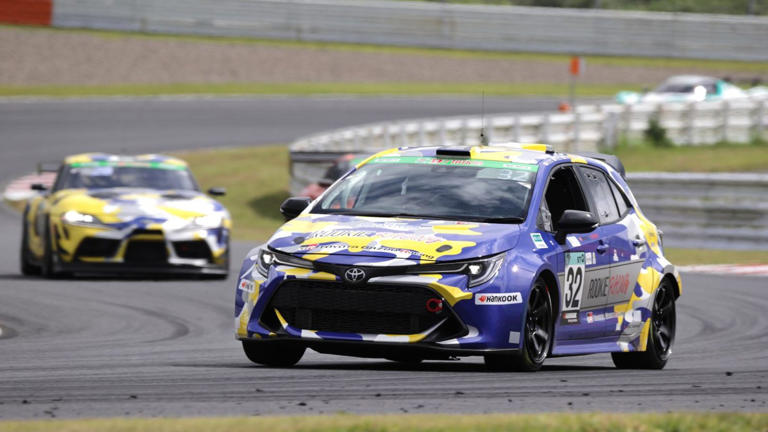
Toyota Corolla Hydrogen© Provided by TopSpeed
Related
Proof That Toyota Is Betting Big On Hydrogen Despite The Development Of Its 745-mile Solid-state BatteryHydrogen may seem like a pipe dream, but Toyota truly believes in it and is not slowing down despite its progress in EVs.
Toyota Has Been Working On Fuel Cell Technology For Over 30 Years
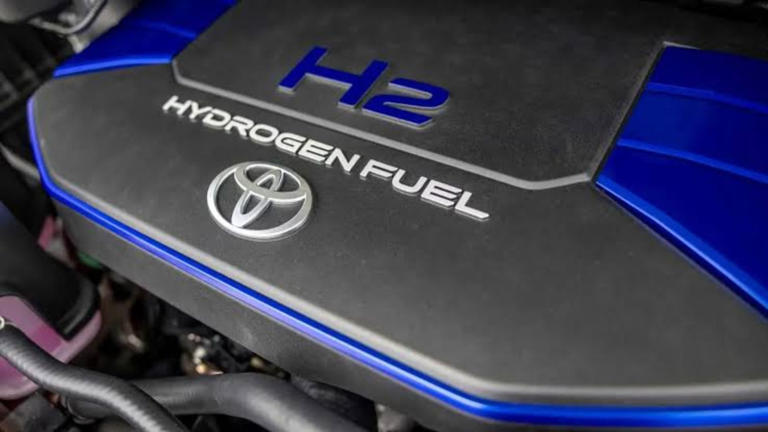
Toyota HiAce Hydrogen© Provided by TopSpeed
While the fuel cell is an old technology, Toyota is a more recent player on that historical scale. Toyota started its vision for a hydrogen automotive future about three decades ago.
Toyota Began Its Fuel Cell Program In 1992
In 1992, Toyota announced its intent to develop a car that ran on hydrogen power and began developing its fuel cell technology.
In 1995, its first FHEV (Fuel Cell Electric Vehicle) was developed.
By 2005, the FCHV (Fuel Cell Hydrogen Vehicle) was available for sale in limited quantities in Japan and the U.S.
By 2008, the new FCHV-adv was capable of a 516 miles (830 km) range.
In 2014, the Mirai was launched for sale in various global markets, making a mainstream hydrogen fuel cell car available to the public.
Toyota is the commercial leader in hydrogen fuel cell technology, and has been at the forefront of the mass-market development of hydrogen cars. All of that experience has culminated so far in the new Mirai, which is an amazing example of how such special technology can make a perfectly normal and functional vehicle. That hydrogen is not some sci-fi tech, but something that can be used every day. Toyota has been at it for 30+ years and has no plan to stop anytime soon.
The Fuel Cell Makes Use Of A Proton-Exchange Membrane
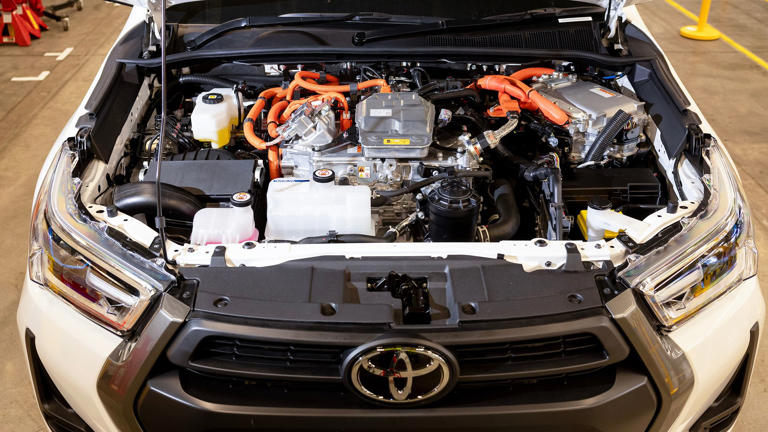
2023 Toyota Hilux Hydrogen prototype, under-hood view© Provided by TopSpeed
Fuel cells are obviously complicated and advanced technology. We'll attempt to describe what actually makes them work here. Proton-exchange membranes essentially convert hydrogen and oxygen molecules into water (H2O) and capture the electrical energy of this reaction.
This Technology Represents A Leap In Fuel Cell Development
Proton-exchange membranes (PEMs) will replace the alkaline fuel cells that powered the space shuttle and other landmark fuel cell technologies.
PEMs can be used at low temperatures up to -20 C. This makes them ideal for road-going vehicles as well as generators in cold areas.
PEMs produce no emissions besides water vapor.
With the new technology available, Toyota has the perfect setup for powering cars. Newer PEMs are significantly smaller than old alkaline fuel cell technology, while producing a similar power output. PEMs are much more reliable in terms of leaks and do not require harmful chemicals for sealant. Hydrogen fuel cells that can withstand cold and output high power in a smaller package are a recipe for a successful hydrogen vehicle.

2024 Toyota Crown Z (FCEV)© Provided by TopSpeed
How Hydrogen Combustion Engines Will Challenge The EV Market At Its CoreHydrogen combustion engines challenge EVs with rapid refueling, longer range, and broader sustainability.
Toyota Fuel Cells Do Not Need A Humidifier

Toyota Mirai Motor© Provided by TopSpeed
With all the advantages of PEMs, one of the main disadvantages is water management. A dry PEM cannot properly produce electricity and becomes damaged. An overly wet PEM cannot bring in oxygen. Until 2014, most fuel cells had a dedicated humidifier system to manage the water. Toyota created breakthrough technology for their Mirai to solve this issue.
The Water Produced By Emissions Is Used Instead
Toyota created a porous mesh to solve the humidifier issue, which reduces the number of parts in the fuel cell system.
The mesh allows more oxygen to flow in while also ensuring enough water flows out.
The vapor from the emissions becomes its own self-regulating humidifier.
Toyota solved a decades-long problem in fuel cells in order to make its Mirai a viable option for the road. Breakthroughs like this show just how dedicated Toyota is to hydrogen fuel cell technology.
Toyota Has Expanded Fuel Cell Technology Beyond Automotive Uses
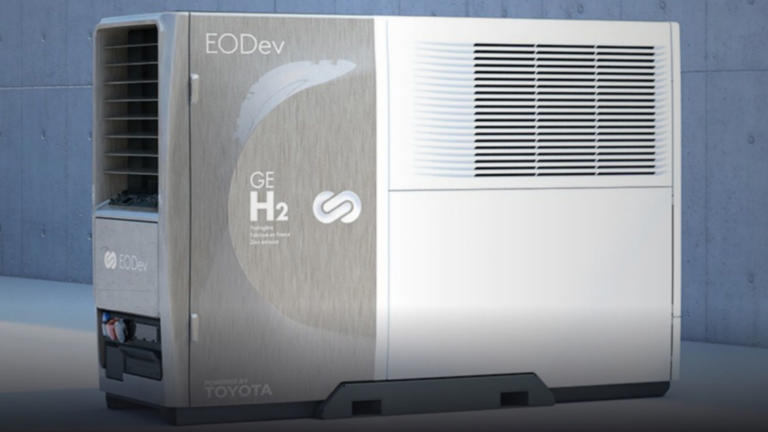
Toyota H2 Generator© Provided by TopSpeed
We have to remember that a hydrogen fuel cell is not actually automotive engineering. It's just a form of electricity generation. While cars are an excellent use of technology, they are far from the only one.
Hydrogen Power Has Virtually Limitless Applications
Hydrogen generators are a primary alternative use offered by Toyota, proving clean energy can power buildings. Toyota even lit up the Eiffel Tower using an H2 generator.
Toyota has used H2 generators on its Energy Observer boat, which was the first hydrogen-powered vehicle to circumnavigate the globe.
Hydrogen-powered train prototypes have been developed by Toyota in conjunction with the EU project FCH2Rail.
Toyota proved the ability of the hydrogen fuel cell on the road. Then it went above and beyond and expanded the application to the sea, the rail, and the grid as well. An emission-free generator is not a one-note device. The applications for fuel cells will only grow as hydrogen infrastructure becomes more and more common.

GM-Honda Hydrogen Fuel Cell manufacturing unit© Provided by TopSpeed
GM And Honda Begin Production Of Hydrogen Fuel Cells In Their New U.S. FacilityGeneral Motors and Honda rev up hydrogen fuel cell production in the U.S., aiming for affordability and broader adoption.
Hydrogen Powered Trucks Are Available From Toyota

Toyotas Hydrogen-Powered Fuel Cell Trucks© Provided by TopSpeed
Toyota is not just pushing hydrogen for small environmental vehicles. While consumer-focused hydrogen is a huge part of its automotive future, it also wants to revolutionize the trucking industry as well.
PACCAR And Toyota Have Partnered To Make Zero Emission Trucks
Kenworth and Peterbilt truck brands will be available with hydrogen fuel cells.
A pilot program was successful in California, and in 2024 the trucks will be available nationwide.
The decision to bring hydrogen to trucking will help bring zero emissions to the heart of the supply chain. In fact, it's been argued that hydrogen tech is better suited for commercial applications. John Rich, PACCAR chief technology officer, commented, “Having worked extensively with the Toyota team, we are confident that our combined efforts can deliver industry leading FCEV trucks with all of the quality, reliability and aftermarket support that Kenworth and Peterbilt customers depend upon”. With the power of PACCAR, Toyota is turning the supply chain into an environmental one.
FuelCell Energy And Toyota Have Partnered To Create a Hydrogen Production Facility

Tri Gen FuelCell Energy Toyota Facility© Provided by TopSpeed
Toyota has taken a huge step in its hydrogen efforts by building a dedicated production facility in the United States. It has partnered with FuelCell Energy, which will operate its Tri-Gen plant.
The Long Beach, CA Compound Will Also Produce Clean Electricity and Water
The "Tri" in "Tri-Gen" represents hydrogen, clean water (a byproduct of the energy generated), and electricity powered by the hydrogen fuel cells.
The clean electricity will power Toyota's yearly intake of over 200,000 vehicles at the port of Long Beach.
The facility should reduce the port's carbon footprint by 9,000 tons of CO2 emissions.
This is one of the first facilities of this kind in the US, and the first for a major automaker. The facility not only produces 1,200 gallons of liquid hydrogen but also 1,400 gallons of clean water daily. If it is a success, we could see this technology expand to other ports for power and water needs.

Mercedes-Benz F-Cell Hydrogen SUV© Provided by TopSpeed
Why Infusing Hydrogen Fuel Cell System Within An EV Skateboard Platform Is A Big BreakthroughA proposed hydrogen fuel cell system could revolutionize FCEVs just as they're taking off, and here's all you need to know about it.
New Hydrogen Fuel Cell Technology Is Safe
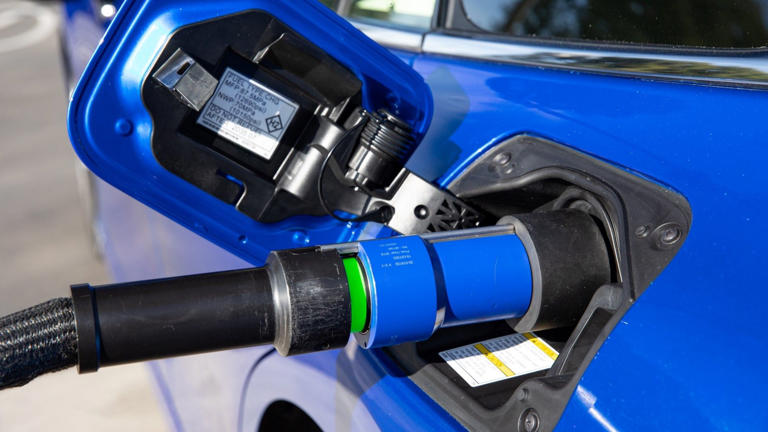
Toyota Mirai Refuelling© Provided by TopSpeed
Hydrogen, for some, conjures the image of explosive and dangerous accidents, like the Hindenberg. "Oh, the humanity!". However, hydrogen is no longer a terrifying fuel proposition.
H2 Is Arguably Safer Than Traditional Fuels
Obviously, to be released to the public, cars must undergo rigorous safety testing, and the Mirai passed these with flying colors.
Toyota's hydrogen tanks are protected by carbon fiber and glass fiber dual shells, and if they do begin to leak, advanced sensors stop the electrification process to prevent ignition.
Refueling stations also have multiple sensor arrays as fail safes for improper release of hydrogen.
We have learned from our mistakes when it comes to hydrogen, and now have safety standards that make it among the safer fuel options. Most gasoline and diesel tanks have neither additional shielding nor leak sensors like hydrogen tanks do. Hydrogen being the lightest element in the universe also means that it can never pool on the ground like gasoline and diesel, it will simply float away. This means there is significantly less risk for combustion, and that hydrogen is the only non-contaminating fuel source. All of this points to a bright future for hydrogen fuel.
Hydrogen Fuel Cells Use Familiar Fuel Infrastructure

Shell Hydrogen Station© Provided by TopSpeed
One of the biggest hurdles for electric vehicles is charging infrastructure. Both availability and time hold back electrics in expansion. Hydrogen cars may still struggle with availability, but they fill up in the same way as any other car.
You Refuel At A Pump, Like With ICE Cars
A current hydrogen fill-up takes about 3 to 5 minutes to get a range comparable to most ICE cars. Essentially, it is an identical process.
While hydrogen is not nearly as widely available as gasoline, or even really electric, it should be much easier to add to current gas stations as the above image displays. Cars do not need to sit for extended periods of time.
Liquid hydrogen should make this transition even easier, as it will have a similar storage infrastructure to gasoline, meaning retrofitting should be simple.
Hydrogen will be familiar to customers, pop in a pump, watch the numbers climb, pay, and drive away. This makes it a more attractive prospect than managing a charge on an EV. Unfortunately, however, Shell has decided to discontinue its hydrogen service for consumers. Shell plans to shut all California fuel stations in 2024. This deals a blow to an already small system of hydrogen refueling. However, it does not appear to have discouraged Toyota at this stage.
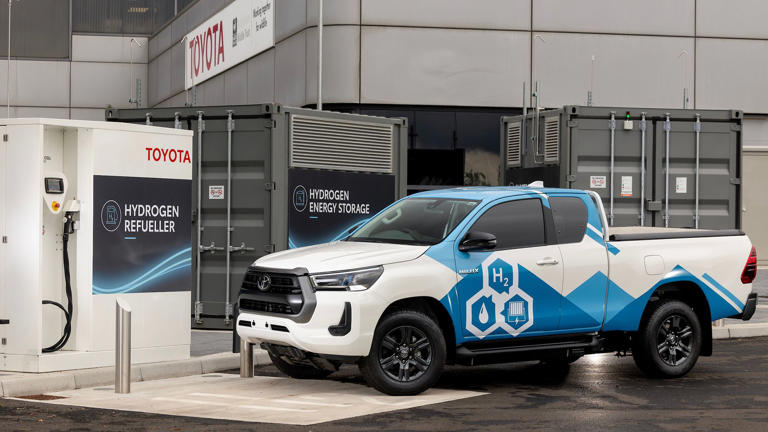
2023 Toyota Hilux Hydrogen prototype, profile view© Provided by TopSpeed
Toyota's "Hydrogen Sharing Network" Could Make Refuelling Your Hydrogen-powered Car A Whole Lot EasierThanks to recent patent filings, we've learned what Toyota has in store with its "Hydrogen Sharing Network", and it could be a great move.
Toyota Fuel Cell Cars Have Been On The Road For Nearly A Decade

Red 2023 Toyota Mirai© Provided by TopSpeed
The fuel cell-powered car is a proven technology. We do not need to worry about it being a concept, or a theory, because Toyota has been on the roads for the better part of 10 years.
The Mirai Debuted In 2014
The Mirai went on sale in December 2014 in Japan, and April 2015 in California. It went on sale in several European countries in early 2016.
To date, Toyota has sold over 21,000 examples of it.
A second-generation version of the Mirai was released in 2020, and is still the basis of current models.
The current Mirai will do over 400 miles on a single tank.
While the Mirai may not have been sold as well as Toyota hoped, it is still an extremely strong proof of concept for hydrogen fuel cells. Its quality and reliability have in part caused other companies to bring out their own hydrogen fuel cell offerings. The Mirai has shown that hydrogen fuel cells are not just pie-in-the-sky technology.
Toyota Has Big Plans For Hydrogen
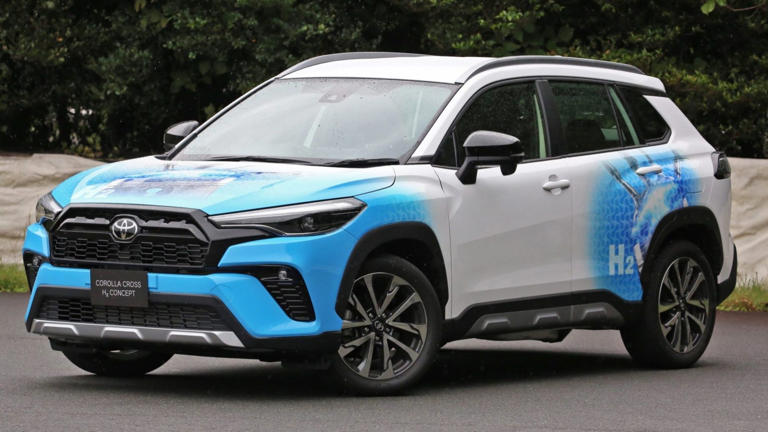
Corolla Cross Hydrogen© Provided by TopSpeed
Toyota is full steam (or maybe just regular old water vapor) ahead with hydrogen offerings. Hydrogen is a core piece of the company's future.
Toyota Sees Hydrogen As The Key To A Carbon-Neutral Future
Toyota plans to be carbon-neutral throughout its company and the lifetime of its vehicles by 2050.
Hydrogen fuel cells are a huge piece to this puzzle, but they will also complement this with solid-state battery technology.
Liquid hydrogen development will also continue to become a larger piece of the equation as their hydrogen combustion technology becomes more mainstream.
There is no greater chance the world has of eliminating emissions from cars than hydrogen fuel cell technology. Electric cars still rely on the fossil fuel grid. Hydrogen has the best of both worlds, long range with a simple refueling process and zero emissions from the car. Fortunately, the most successful car company on Earth has decided to champion hydrogen. We hope they can bring some success to the burgeoning technology.
No comments:
Post a Comment